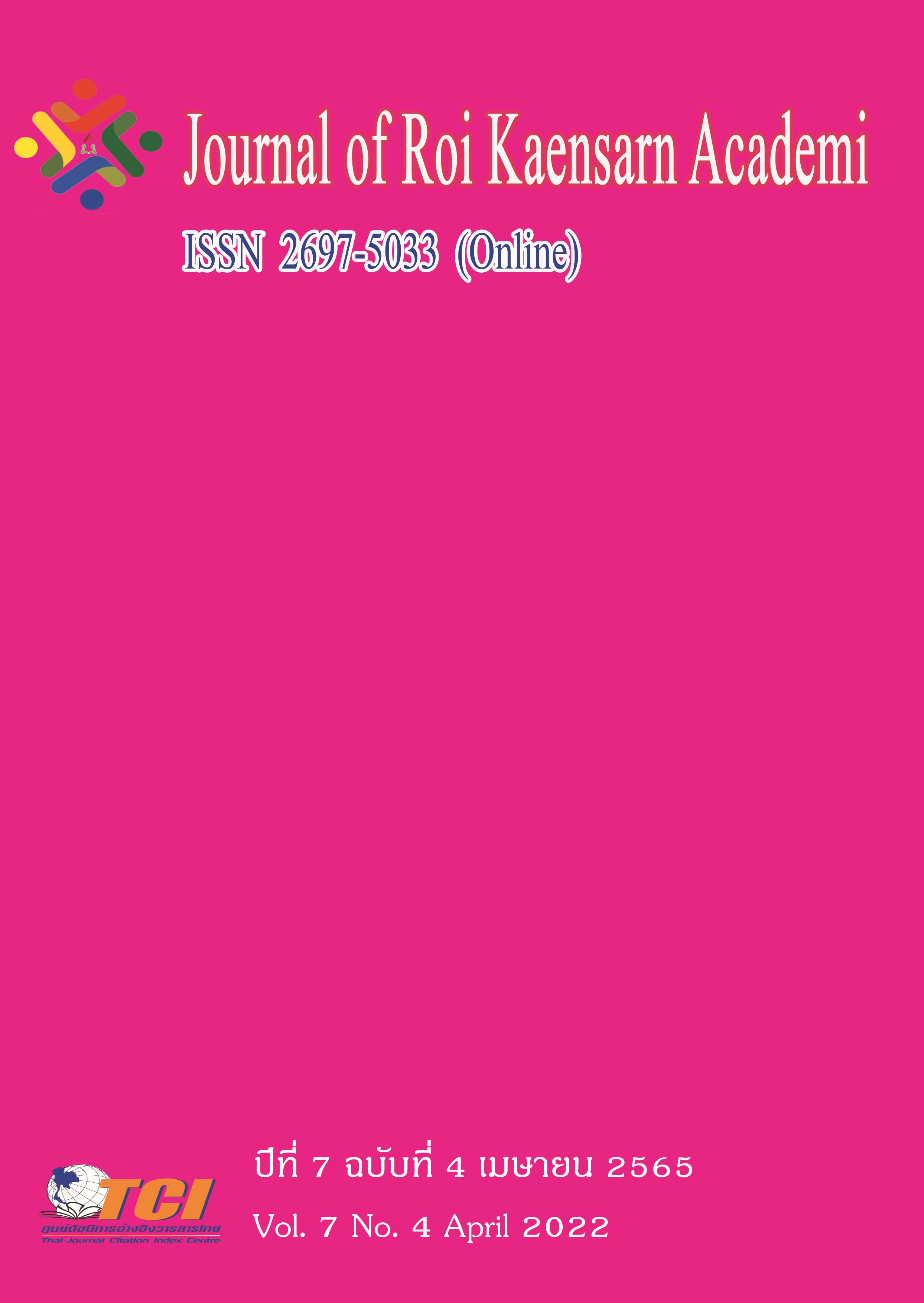ผลกระทบของแรงจูงใจและบุพปัจจัยต่อความภักดีของนักท่องเที่ยว ในแหล่งท่องเที่ยวเชิงวัฒนธรรม อำเภอเมือง จังหวัดแม่ฮ่องสอน
Main Article Content
บทคัดย่อ
การวิจัยนี้มีวัตถุประสงค์เพื่อศึกษาผลกระทบของแรงจูงใจของนักท่องเที่ยวต่อความภักดีต่อแหล่งท่องเที่ยวของนักท่องเที่ยวที่มาท่องเที่ยวในแหล่งท่องเที่ยวเชิงวัฒนธรรม จังหวัดแม่ฮ่องสอนผ่านปัจจัย ภาพลักษณ์ของแหล่งท่องเที่ยวและความพึงพอใจของนักท่องเที่ยว การวิจัยครั้งนี้เป็นการวิจัยแบบผสมผสาน โดยการวิจัยเชิงปริมาณและคุณภาพ การวิจัยเชิงปริมาณวิเคราะห์โดยใช้ตัวแบบสมการโครงสร้าง (Structure Equation Model: SEM) ด้วยโปรแกรมสำเร็จรูปทางสถิติ เครื่องมือคือแบบสอบถามลูกค้าที่เป็นชาวไทยที่เข้ามาจากแหล่งท่องเที่ยวที่นำเสนอวัฒนธรรมไทใหญ่ อำเภอเมือง จังหวัดแม่ฮ่องสอนท่องเที่ยวและพักแรมเป็นอย่างน้อย 2 วัน 1 คืน และใช้แบบสัมภาษณ์วิจัยเชิงคุณภาพประกอบด้วย การสัมภาษณ์เชิงลึกผู้บริหารในหน่วยงานของภาครัฐและผู้บริหารหน่วยงานภาคเอกชนที่มีตำแหน่งหน้าที่ในการดำเนินงานในบทบาทเกี่ยวกับภาคธุรกิจและภาคการท่องเที่ยวในจังหวัดแม่ฮ่องสอนจำนวน 7 คน โดยข้อค้นพบหรือคุณค่าจากงานวิจัยนี้พบว่าองค์ประกอบในเรื่องของแรงจูงใจของนักท่องเที่ยว (Tourist Motivation) ในแหล่งท่องเที่ยววัฒนธรรมไทใหญ่โดยเฉพาะในองค์ประกอบที่สำคัญที่ควรมุ่งเน้น คือ แรงจูงใจในการหลีกหนี (Escape motivations) ของนักท่องเที่ยวซึ่งเป็นปัจจัยสำคัญที่จะมีผลต่อความภักดีต่อแหล่งท่องเที่ยว (destination loyalty) ซึ่งสอดคล้องกับผลการวิจัยเชิงคุณภาพ
Article Details
เอกสารอ้างอิง
กองเศรษฐกิจการท่องเที่ยวและกีฬา. (2562). กระทรวงการท่องเที่ยวและกีฬา. ออนไลน์. สืบค้นเมื่อ 9 ธันวาคม 2562. แหล่งที่มา: https://www.mots.go.th/old/more_news.php?cid=411
นายกองค์การบริหารส่วนจังหวัดแม่ฮ่องสอน, หัวหน้าชุดติดตามและประเมินผล, ประธานสภาวัฒนธรรมจังหวัดแม่ฮ่องสอน, หัวหน้าศูนย์ไทใหญ่ศึกษา, ผู้อำนวยการการท่องเที่ยวแห่งประเทศไทย และรองผู้อำนวยการการท่องเที่ยวแห่งประเทศไทยสำนักงานจังหวัดแม่ฮ่องสอน, ประธานหอการค้าจังหวัดแม่ฮ่องสอน, การสัมภาษณ์ส่วนบุคคล, 9 กันยายน 2562.
ประกาศยุทธศาสตร์ชาติ พ. ศ. 2561-2580. (2561). ราชกิจจานุเบกษา เล่ม 135 ตอนที่ 82ก (13 ตุลาคม 2561), 27-28.
พระราชบัญญัติการท่องเที่ยวแห่งประเทศไทย. (2544). ราชกิจจานุเบกษา เล่ม 118 ตอนที่ 112ก (2 ธันวาคม 2544), 1-28.
วรรณี แกมเกตุ. (2551). วิธีวิทยาการวิจัยทางสังคมศาสตร์. (พิมพ์ครั้งที่ 2). กรุงเทพมหานคร: โรงพิมพ์แห่งจุฬาลงกรณ์มหาวิทยาลัย.
สำนักงานวัฒนธรรมจังหวัดแม่ฮ่องสอน. (2549). ประวัติศาสตร์วัฒนธรรมจังหวัดแม่ฮ่องสอน. เชียงใหม่: สำนักพิมพ์เจริญวัฒนาการพิมพ์.
Akroush, M. N., Jraisat, L. E., Kurdieh, D. J., AL-Faouri, R. N., & Qatu, L. T. (2016). Tourism service quality and destination loyalty-the mediating role of destination image from international tourists’ perspectives. Tourism Review. 71 (1), 18-44.
Assaker, G., & Hallak, R. (2013). Moderating effects of tourists’ novelty-seeking tendencies on destination image, visitor satisfaction, and short and long-term revisit intentions. Journal of Travel Research. 52 (5), 600-613.
Beerli, A., & Martin, J. (2004). Factors influencing destination image. Annuals of Tourism Research. 31 (3), 657-681.
Cassia, F., Cobelli, M., & Ugolini, N. (2017). The effects of goods-related and service related B2B brand images on customer loyalty. Journal of Business & Industrial Marketing. 32 (5), 722-732.
Chetthamrongchai, P. (2017). The influence of travel motivation, information sources and tourism crisison tourists’ destination image. Journal of Tourism & Hospitality. 6 (2), 2-6.
Chi, C. G-Q., & Qu, H. (2008). Examining the structural relationships of destination image, tourist satisfaction and destination loyalty: An integrated approach. Tourism Management. 29, 624-636.
Hsieh, H.-Y. (2016). The influence of travel motivation and destination image on destination choices of backpackers in Tainan. Proceedings of the eighth Asia-pacific conference on global business, economics, finance and banking (AP16Singapore Conference). ISBN: 978-1-943579-07-5 Singapore. 21-23, July 2016. Paper ID: S655.
Kanwel, S., Lingqiang, Z., Asif, M., Hwang, J., Hussain, A., & Jameel, A. (2019). The influence of destination image on tourist loyalty and intention to visit: Testing a multiple mediation approach. Sustainability. 11 (2), 6401-6419.
Kim, J.-H. (2017). The impact of memorable tourism experiences on loyalty behaviors: The mediating effects of destination image and satisfaction. Journal of Travel Research. 1, 1-15.
Likert, R. (1932). A technique for the measurement of attitude. New York: The Science Press.
Martin-Santana, J. D., Beerli-Palacio, A., & Nazzareno, P. A. (2017). Antecedents and consequences of destination image gap. Annals of Tourism Research. 62 (1), 13-25.
Mohamad, M., Ghani, N. I. A., Mamat, M., & Mamat, I. (2014). Satisfaction as a mediator to the relationships between destination image and loyalty. World Applied Sciences Journal, 30 (9), 1113-1123.
Pratminingsih, S. A, Rudatin, C. L., & Rimenta, T. (2014). Roles of motivation and destination image in predicting tourist revisit intention: A case of Bandung-Indonesia. International Journal of Innovation, Management and Technology. 5 (1), 19-24.
Pike, S. (2004). Destination marketing organizations. Oxford: Elsevier.
Wang, C., Qu, H., & Hsu, M. K. (2016). Toward an integrated model of tourist expectation formation and gender difference. Tourism Management. 54, 58-71.
Wang, T. L., Tran, P. T. K., & Tran, V. T. (2017). Destination perceived quality, tourist satisfaction and word-of-mouth. Tourism Review. 72 (4), 392-410.

